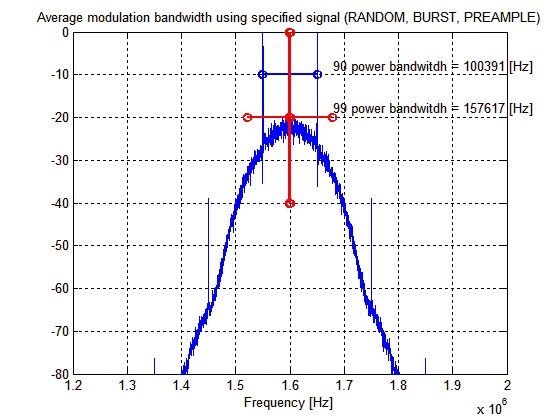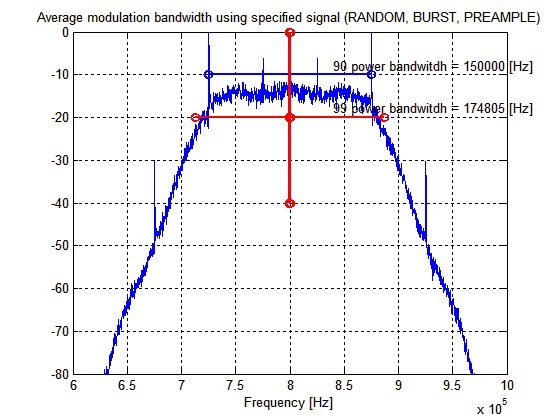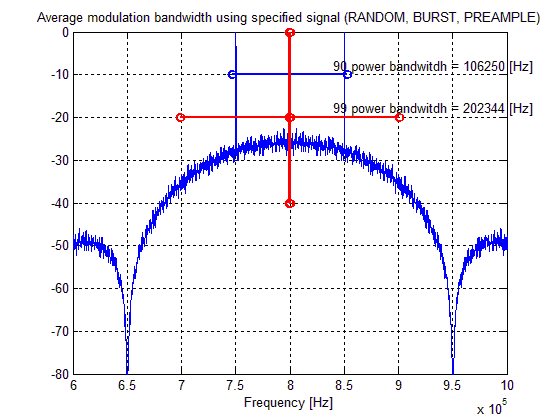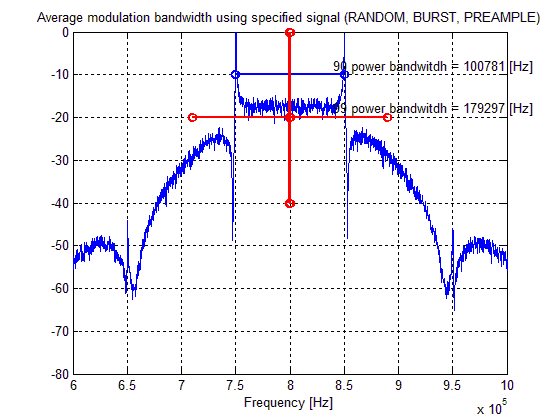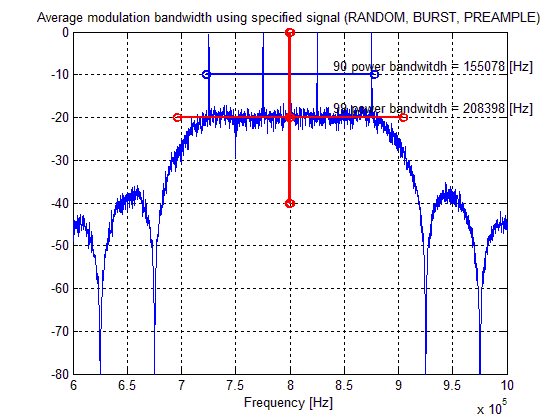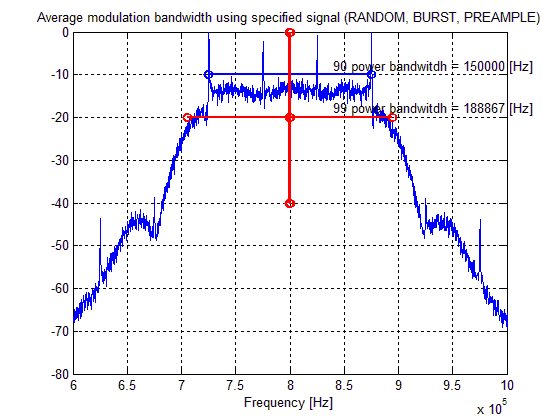Other Parts Discussed in Thread: CC1101
Hi Ti experts,
We are users of the CC1120 Transceiver ICs for a few years now and very satisfied with the flexibility and performance for our applications on custom boards.
One issue that has cropped up recently is the choice of optimal frequency deviation dF vs RX receiver bandwidth Rx-BW for 4GFSK based systems.
Doing a quick scan of available literature one comes across the formula for 2-FSK for the Occupied Bandwidth of : 2 x dF + Br = OBW (where dF is the peak frequency deviation and Br is the binary bitrate). This will be slightly less for 2-GFSK.
So my question relates to M-ary FSK system of which the CC112X is capable of. Notably 4GFSK will have twice the effective bitrate and should have a larger OBW than 2GFSK, therefore optimizing (or matching) the Receiver filter Rx-BW is crucial to get best S/N and BER for maximum overall range and sensitivity.
Unfortunately we are beyond the evaluation board and SmartStudioRF as we have more or less used the values recommended by the software for the 10K - 20K symbol rate range, the preamble and sync-word etc. This was really done at the start and the values recommend are more or less the ones s=used for the radio initialization. The optimization we seek is really on a more general level and needs to be applied to our custom board for the application.
One way I have tried doing is to generate a BER output from a CC1120 link from one transmitter Tx to a receiver Tx (configured from our custom boards – displayed on the OLED and available as a USB output to TeraTerm)), adding a 20 m coaxial between for isolation and some 110dB attenuation between the two Tx and Rx. So the only path for the transmitted signal is via the coax and the attenuator (the Tx and Rx PCBs being inside metal cases for isolation - yes, leakage and unwanted interference is significant at such low signals levels).
The symbol rate Sr and packet length and format is fixed, however by tweaking the attenuation to get to a low level BER (say < 3%) then trying various modulation index m, vs frequency deviation dF, vs receiver bandwidth Rx-BW we are hoping to find a minimum point somewhere for a certain configuration of these modulation parameters.
The current results are not quite as expected which makes me think of the spectrum of 4GFSK signal from a CC112X, similarly as estimated for a 2-FSK signal above OBW = 2 x dF + Br. Some literature mentions a formula of 6 x dF + 4 x Sr = OBW (where Bit rate Br = 2 x Sr Symbol rate for 4-FSK). However for a 10K symbol rate and 15KHz deviation, it would give us a rather large spectrum comparatively - about 130KHz, but we see a Receiver BW requirement of a lot less actually only around < 50KHz (and works OK even with slightly less). Thgis makes me think the 4GFSK generated by the CC112X is much more spectrally efficient than the formulas for OBW would make us think. This 4GFSK modulation format has a better spectral efficiency because of Gaussian shaping, OK, but I did not expect less than half that !! Actually with a RX-BW of around 100KHz (a good compromise to fit most of the 130KHz estimated OBW) the range is terrible and the BER is >50%. I assume the S/N is degraded significantly as the receiver B/W is actually larger than required and too much noise enters the system …
so my question(s) :
- Can you please recommend a similar formula (or some way) to estimate the OBW specifically of a CC112X radio in 4GFSK mode, to allow users to better estimate/predict OBW and consequently the optimum receiver bandwidth Rx-BW to use for the purpose of optimizing range, BER etc for a given system. It may be that the CC112X Gaussian shaping, and or other signal processing in the CC112X transmitter does not quite match the ideal “Matlab” generated spectra that give the OBW = 6 x dF + 4 x Sr prediction available in some literature.
- Can you point to some application notes that treat in more detail 4GFSK systems such as the CC112X as the ones seen are mainly based on the 2FSK or similar...
- How would you recommend an optimization on this level (modulation index m vs dF, vs Rx-BW) should be done, given you know the Ti radio performance at a higher level than most users in the general public ? Any recommendation that may assist us ?
Thanks in advance and regards,
Mke Marin


